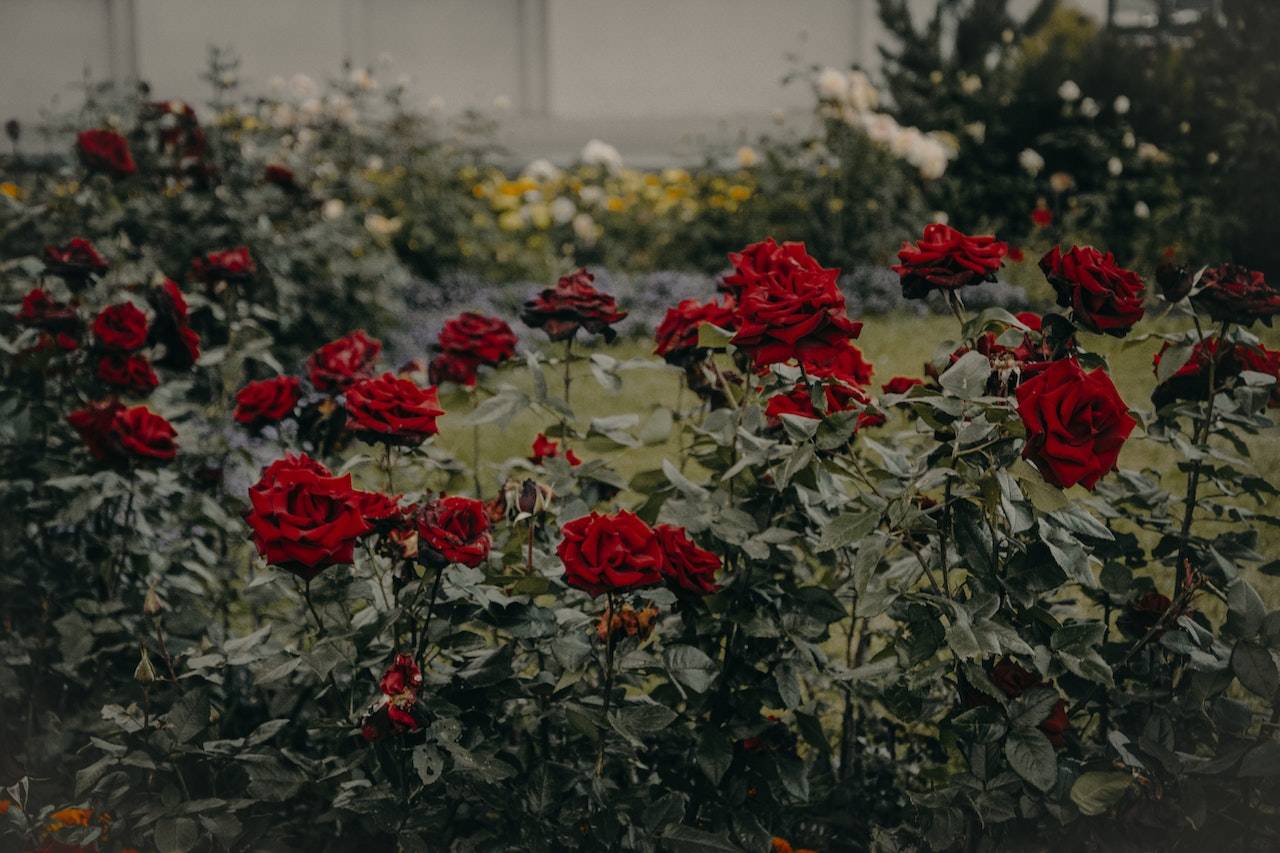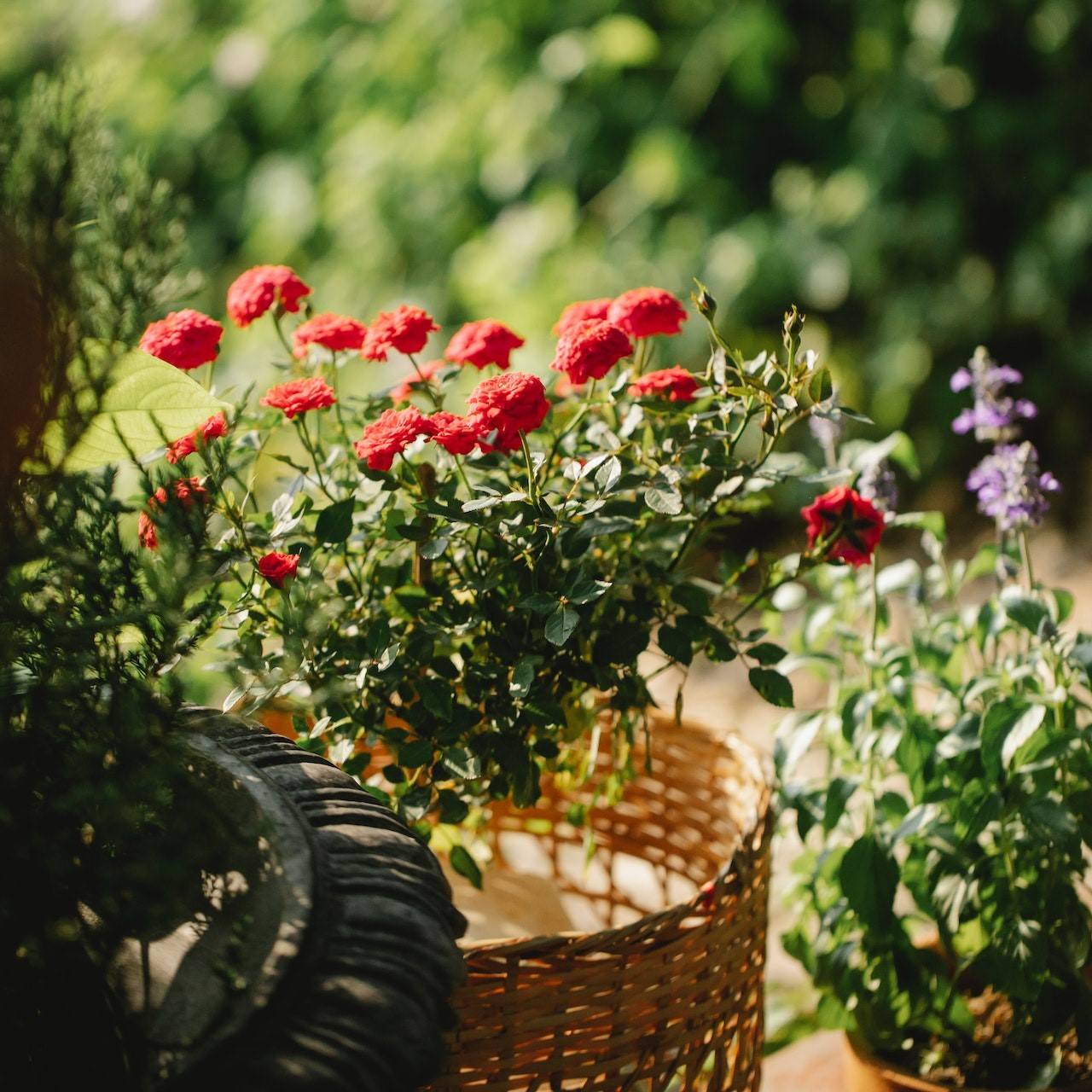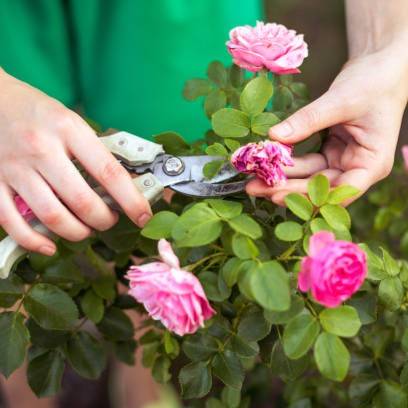
Caring for Roses
Rose care is easier than you think and can be boiled down to planting your roses in a sunny location with good drainage, watching out for common diseases, deep and frequent watering, and most importantly fertilizing them to give them the needed nutrients to bloom their beautiful blooms.
Starting with the Roots
When you’re looking at roses for purchase, you’ll often see two main types of roses for sale - Bare-Rooted Roses or Container Roses - They both have their own benefits.
Bare-Rooted Roses: These are great as there is more of a selection of varieties. They are usually shipped from a seed store or direct from a wholesaler and can oftentimes be less expensive than container roses. When purchasing bare-rooted roses, you’ll have less time to transplant them so timing is important when getting bare-rooted roses. Bare-Rooted Roses will need a little more TLC after planting as they are dormant and will need time to adjust to being in the soil again.
Container Roses: These are great for novice gardeners because they’re easy to plant and establish quickly. They can also be purchased at local nurseries throughout the growing season. This allows you to plant them when climate conditions are ideal— preferably on a cool and cloudy day.

Choosing your roses wisely
There are many rose species to choose from, ranging from micro-miniatures (check out our friend Ed’s mini roses he grows with our Bloom Juice) to grandifloras, and even groundcovers and climbing roses. There are over 30,000 known cultivated species to date and over 150 wild-grown roses.
While it may be tempting to go out and choose a couple to grow together when you’re getting started, it’s important to make sure the varieties you choose are capable of being companion roses. Some roses require slightly different environments and will not be happy growing with other roses.
Finding the right spot in the garden
For the best blooms and healthiest plants, rose bushes should receive six to eight hours of sunlight daily. They should also be planted in well-drained soil that is rich in organic matter- our worm castings are perfect for this. In especially hot climates, roses do best when they are protected from the hot afternoon sun, either with shade cloth or planted in an area that gets less than the full 6/8 hours of sunlight.
Getting the timing right
Roses are best planted in the spring (after the last frost) or in the fall (at least six weeks before your average first frost).
Bare-root roses are typically available only in early spring and should be planted soon after you bring them home whereas roses purchased in containers give you more flexibility in planting time.
Planting properly
Planting your bare-root roses or container roses properly will ensure they get off to a good start.
- The planting hole needs to be deep enough and wide enough to accommodate the plant’s roots. The area needs to have good drainage -roses don’t like wet feet.
- Mix a generous amount of Ancient Soil or Worm Castings with the soil that was removed from the planting hole. Use some of this mixture at the bottom of the planting hole and place the rose bush in the hole.
- The plant’s crown (where the roots meet the stem) should be at ground level for mild climates and 2 to 3 inches below ground level for cold climates.
- Water thoroughly, and then finish filling the hole with the remaining soil.
- Water again, then mound loose soil around the canes (stem/trunk but for a rose bush) to protect the rose while it acclimates to its new site.
- If you’re planting several rose bushes together, space them at least 3 feet apart to allow ample growing room as they mature.
For impressive flowers, a rose bush needs to be fertilized regularly. Organic methods provide a slow, steady supply of nutrients without the worry of potentially burning your roses. Watering with our Bloom Juice or Plant Juice can be added with each watering and monthly applications of Ancient Soil, Worm Castings, or Bloomin’ Soil work wonderfully as topsoil amendments and will last for 6 weeks of nutrients. Our organic amendments not only help the rose but will also help to encourage beneficial soil microbes and a well-balanced soil pH.
For newly planted bare-root plants; Apply Ancient Soil to the soil at planting time. Wait until after the plant produces its first blooms to apply your other fertilizers as full-strength fertilizers have the possibility to burn the new roots.
Soil should be kept evenly moist throughout the growing season. The amount and frequency of watering will depend on your soil type and climate. Roses growing in sandy soils will need more watering than those in heavier clay soils. Hot, dry, and windy conditions will also parch roses quickly.
How you water is as important as the frequency. To keep roses healthy, avoid wetting the foliage. Use a soaker hose, a watering can with a long spout, or a watering wand pointed directly at the soil.
It’s almost impossible to kill a rose bush by over-pruning. However, following a few rules, the results will look more professional and result in a healthier plant, rather than a bare bush. Many newer hybrids of rose varieties don’t require much —if any—pruning. Major pruning should be done in early spring. For all roses, start by removing any dead or damaged canes (any that look brown). For specimens that require hard pruning, cut back a third to a half of the previous year’s growth until you find healthy, white centers inside the cane- it’s always easier to start pruning less than you think you’ll need to prune and keep cutting shorter.
You can lightly prune your roses all season long to keep them well-groomed.
Some varieties of roses require Dead Heading. This is when you snip the dying flowers off of the bush to encourage more flowers.
If your rose bushes are “self-cleaning” (which means they don’t develop rose hips), no deadheading is needed. Blooms will drop off automatically and the plants will keep on producing more flowers.

The best way to prevent rose diseases is to choose disease-resistant varieties. These roses are bred and selected to resist the most common rose afflictions, including powdery mildew and black spot.
Powdery mildew typically appears during the early summer/late spring, especially when the days are hot and dry and the nights are cool and wet. The tell-tale signs include leaves that curl and twist and the development of a white, powdery down on the leaves. To avoid powdery mildew, water plants at ground level in the morning, since wet leaves (especially overnight) provide the perfect growing environment. Pruning a rose bush to allow air to circulate through the foliage also helps prevent this powdery growth.
Black spot is a waterborne fungal disease. It appears as circular black or brown spots on the top side of the leaves. It starts toward the bottom of a bush and works its way up, eventually causing defoliation. Prevent this disease the same way you prevent powdery mildew: by improving air circulation around and through the plant, and watering at ground level.

Subscribe
Join our mailing list for plant care and gardening tips and tricks for both indoors and out!
